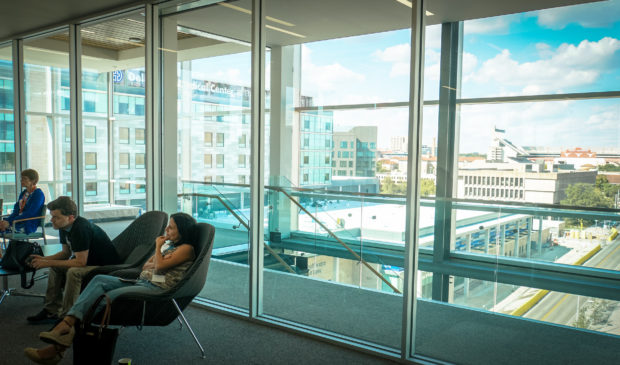Hiring, developer withdrawal signal movement for medical innovation zone
Thursday, July 20, 2017 by
Chad Swiatecki Last week saw movement on two fronts related to the creation of the long-anticipated downtown health care innovation district that is tied to the University of Texas’ Dell Medical School.
The most high-profile piece of news came with the announcement of the hiring of Chris Laing as the executive director of Capital City Innovation.
The nonprofit was formed last spring as a cooperative between founding members Dell Medical School, Central Health and Seton Healthcare Family for the purpose of acting as “a catalyst in encouraging innovation activities and developing an innovation ecosystem” on property located near the medical school and other health care facilities.
The three founding members each were asked to contribute $250,000 to fund the organization, with the city of Austin and Travis County serving as ex officio members.
Laing, who served as vice president of science and technology at the University City Science Center in Philadelphia, starts Sept. 1 and will arrive as the process of redeveloping Central Health’s property containing the former Brackenridge Hospital kicks into high gear. Proposals from groups in the running to redevelop the site are due Aug. 25, with the six blocks on the eastern edge of downtown representing one of the largest tracts of real estate up for grabs in the area. The project already boasts a 57-page outline.
Earlier this week a Dallas-based group withdrew from the selection process for undisclosed reasons, leaving three teams – Brandywine Realty Trust, Catellus Development Corporation, and Wexford Science & Technology – still in the running.
Laing told the Austin Monitor that his role in assisting with the Brackenridge redevelopment is still to be determined but said there’s no doubt that the mixed-use project will define and set the tone for the entire innovation zone.
Established health care innovation zones in Boston and the Bay Area of California feature startup businesses and academic research in a clustered setting, with local government playing a role in spurring related development.
“The key elements are having a diverse set of ingredients, with public spaces and an eye toward development that is active 24/7,” Laing said. “We’re trying to attract companies with workers that want to be in places that are human-friendly, and having all the right people involved in making that happen is important.”
The job description for Laing’s role stated that Capital City Innovation will need to facilitate private development efforts that mesh with the governmental hopes for the project, which was made possible in part by a 2012 bond election to pay for community health care services provided by Seton’s new teaching hospital.
Laing said he’ll start his job by seeking out as many leaders and community members involved in the innovation zone effort as possible and learning how they can work together to promote business growth and development in the district.
That will mean acting as an intermediary between the governmental forces that launched the various tent pole projects for the district and small businesses and developers that occasionally bristle at the idea of navigating regulations and bureaucracy.
“Government and related organizations are good at building the ecosystem, and they need to stay out of the way to allow startups and entrepreneurs to move at their own pace,” he said. “It was a very smart move to create a separate organization to convene the different players because that helps to bridge the gaps.”
Laing said aside from the groups involved in overseeing Capital City Innovation, he looks forward to working with the Downtown Austin Alliance and Waller Creek Conservancy leaders in mapping out how the innovation zone will fit into the larger ecosystem of downtown Austin.
Asked about the prospects for turning Austin into a life sciences and biotech hot spot on par with the coastal health care hubs, Laing said the city’s thriving technology community and the medical school’s focus on population health give it a promising start.
“My gut tells me that population health and wellness is an area where that is well poised here, and the question is, how do you deliver health care when and where it is needed by the people?” he said. “You also need (business) diversity, and there’s already quite a life sciences presence in Austin so they’ll be an important element. It’ll be important for the innovation zone to be open to a range of companies and players.”
Photo by Ted Eytan made available through a Creative Commons license.
The Austin Monitor’s work is made possible by donations from the community. Though our reporting covers donors from time to time, we are careful to keep business and editorial efforts separate while maintaining transparency. A complete list of donors is available here, and our code of ethics is explained here.
You're a community leader
And we’re honored you look to us for serious, in-depth news. You know a strong community needs local and dedicated watchdog reporting. We’re here for you and that won’t change. Now will you take the powerful next step and support our nonprofit news organization?









